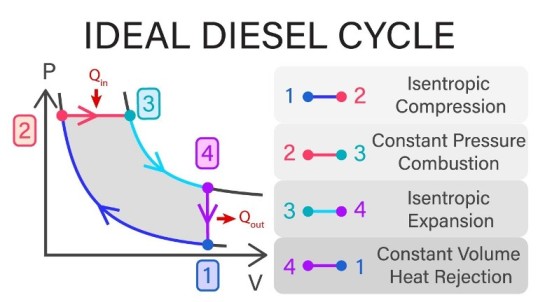Answer is:
v/T = constant, if p is kept constant
Answer is:
Joule (J)
Explanation:
As energy is defined via work, the SI unit of energy is the same as the unit of work – the joule (J), named in honor of James Prescott Joule and his experiments on the mechanical equivalent of heat. In slightly more fundamental terms, 1 joule is equal to 1 newton metre and, in terms of SI base units
Answer is:
hyperbolic process
Answer is:
It is impossible to transfer heat from a body at a lower temperature to a body at a higher temperature, without the aid of an external source.
Answer is:
one constant pressure, one constant volume and two isentropic
Explanation:
Diesel cycle was devised by Dr. Rudolph Diesel in 1893, with an idea to attain a higher thermal efficiency, with a high compression ratio. Diesel Cycle is an important cycle on which all the diesel engines work. It is also known as constant pressure cycle as heat is received at a constant pressure.
The ideal diesel cycle consists of two reversible adiabatic or isentropic, a constant pressure and a constant volume process.
